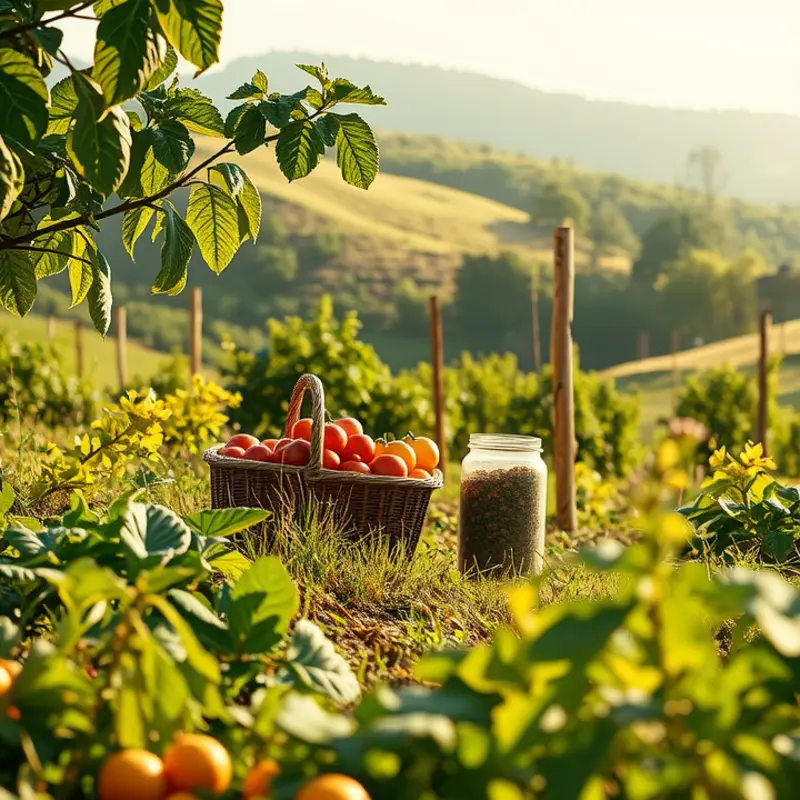Fresh herbs are a flavorful addition to any meal, but they have a short shelf life if not stored properly. Many people end up discarding wilted or spoiled herbs due to improper storage techniques. By learning effective strategies for preserving herbs, you can reduce food waste and enhance your cooking experience. This guide will provide practical tips to keep your fresh herbs vibrant and delicious for longer.
Understanding the Best Practices of Herb Storage

Storing fresh herbs efficiently revolves around understanding their unique characteristics and needs. Different herbs possess varying moisture content, structure, and aroma profiles, which determine their optimal storage practices. Knowing how humidity, temperature, and light influence these delicate ingredients can significantly extend their lifespan, minimizing waste while maintaining their rich flavors.
Humidity plays a crucial role in preserving herbs. Most herbs, such as cilantro and basil, appreciate a slightly moist environment. However, excess moisture can foster mold, leading to spoilage. Wrapping these herbs in a damp paper towel before placing them in an open plastic bag can strike a balance, providing enough moisture without suffocating the leaves.
Temperature control is equally significant. Refrigeration is usually the best option for herbs like cilantro and parsley. They thrive in cooler climates and enjoy a longer shelf life when stored in the fridge. On the other hand, basil, a herb common in Mediterranean cuisine, despises the cold and should be kept on the counter in a jar of water, much like fresh flowers. This method maintains its vibrant color and fragrant aroma for several days.
Exposure to light can be detrimental to fresh herbs. Unlike potted plants, cut herbs tend to wilt faster under direct sunlight or artificial light. Keeping them in opaque containers or wrapping them gently with a cloth helps protect them from light exposure, retain moisture and keep them fresh longer.
Common herbs have their quirks. Basil, sensitive to cold, prefers room temperature and moderate moisture. Cilantro, with delicate leaves and stems, benefits from being kept cool and slightly damp. Rosemary, with its woodier structure, retains its flavor well when refrigerated and enjoys the dry, crisp environment of a simple brown paper bag. Analyzing each herb’s individual needs ensures they remain flavorful and vibrant.
One of the common challenges in herb storage is maintaining moisture without encouraging decay. Turning to simple solutions, such as breathable bags, ensures herbs don’t get too clammy. The use of herb storage containers or airtight jars with a paper towel lining can offer a clever workaround for finicky herbs.
When it comes to storage pros and cons, fridge storage offers extended freshness, though it can sometimes dilute more delicate flavors. Counter storage keeps herbs easily accessible and doesn’t dull their aromas, but their shelf life shortens significantly.
Furthermore, understanding and implementing these practices can support more sustainable and eco-friendly kitchen habits. For those interested in merging sustainability with practicality, you might find the techniques discussed in this guide on low waste cooking prep particularly useful.
Ultimately, tailoring storage methods to each herb type by considering the factors of humidity, temperature, and light, can transform how we use and enjoy fresh herbs.
Creative Techniques for Long-Term Preservation of Fresh Herbs

Extending the life of fresh herbs through inventive preservation techniques not only ensures their delightful flavors remain intact but also provides an economic advantage by reducing waste. Among these techniques, freezing, drying, and creating herb-infused oils or vinegars offer unique ways to keep herbs available year-round.
Freezing is an excellent option for preserving fresh herbs. To begin, select fresh, flavorful herbs. Wash and pat them dry thoroughly. For whole leaves, lay them flat on a baking sheet in a single layer and freeze them. Once frozen, transfer them to airtight bags or containers. Alternatively, chop herbs and place them into ice cube trays, filling each section with olive oil or broth before freezing. Use these herb cubes to infuse soups, stews, or sauces with a burst of freshness. Always ensure that containers are labeled with the herb name and date of freezing.
Drying herbs is another method that enhances longevity. First, rinse and pat the herbs dry. Bundling several sprigs together, hang them upside down in a warm, well-ventilated room. Leave them to dry completely, usually taking a week. Removing the leaves from the stems, store the fully dried herbs in airtight containers, away from light and heat to preserve their flavors. Dried herbs generally have a more concentrated taste, so use them sparingly when cooking.
Creating herb-infused oils and vinegars captures the essence of fresh herbs in a liquid medium. For herb oils, select sturdy varieties such as rosemary, thyme, or oregano. Combine one cup of oil with a handful of stems in a saucepan and gently heat to enhance flavor absorption. After cooling, strain and transfer the oil into clean bottles. Herb-infused vinegars are made by inserting fresh herbs into a jar and covering them with vinegar. Seal and store in a cool place, shaking occasionally. Wait about two weeks for flavors to develop before straining and bottling.
When incorporating these preserved herbs into meals, expect a depth of flavor that mirrors a freshly picked experience. This method of preservation not only saves money by avoiding repeated fresh herb purchases but also minimizes food waste, contributing to an eco-friendly kitchen. For more sustainable kitchen practices, consider visiting Eco-Smart Kitchen Storage.
Organizing preserved herbs is simplified by clearly labeling and dating all containers. Utilize small, clear jars or containers that allow easy visibility, ensuring proper stock rotation. This step is critical for maintaining optimal quality and flavor, as older preserved items should be used first.
Overall, these creative techniques for herb preservation help maintain an organized kitchen while enhancing culinary flavors and supporting a greener lifestyle. Recall, each preservation method has its distinct advantages; choose based on herb type and intended use to maximize both flavor and practicality.
Final words
Keeping your fresh herbs alive and flavorful requires some effort, but the benefits are undeniable. By understanding the ideal storage conditions and using innovative preservation techniques, you can dramatically reduce waste. Not only will your ingredients be more vibrant when you cook, but your meals will also burst with the freshness that only herbs can provide. Implement these strategies at home to enjoy the flavors of fresh herbs longer and minimize the need for tossing out wilting greens.







